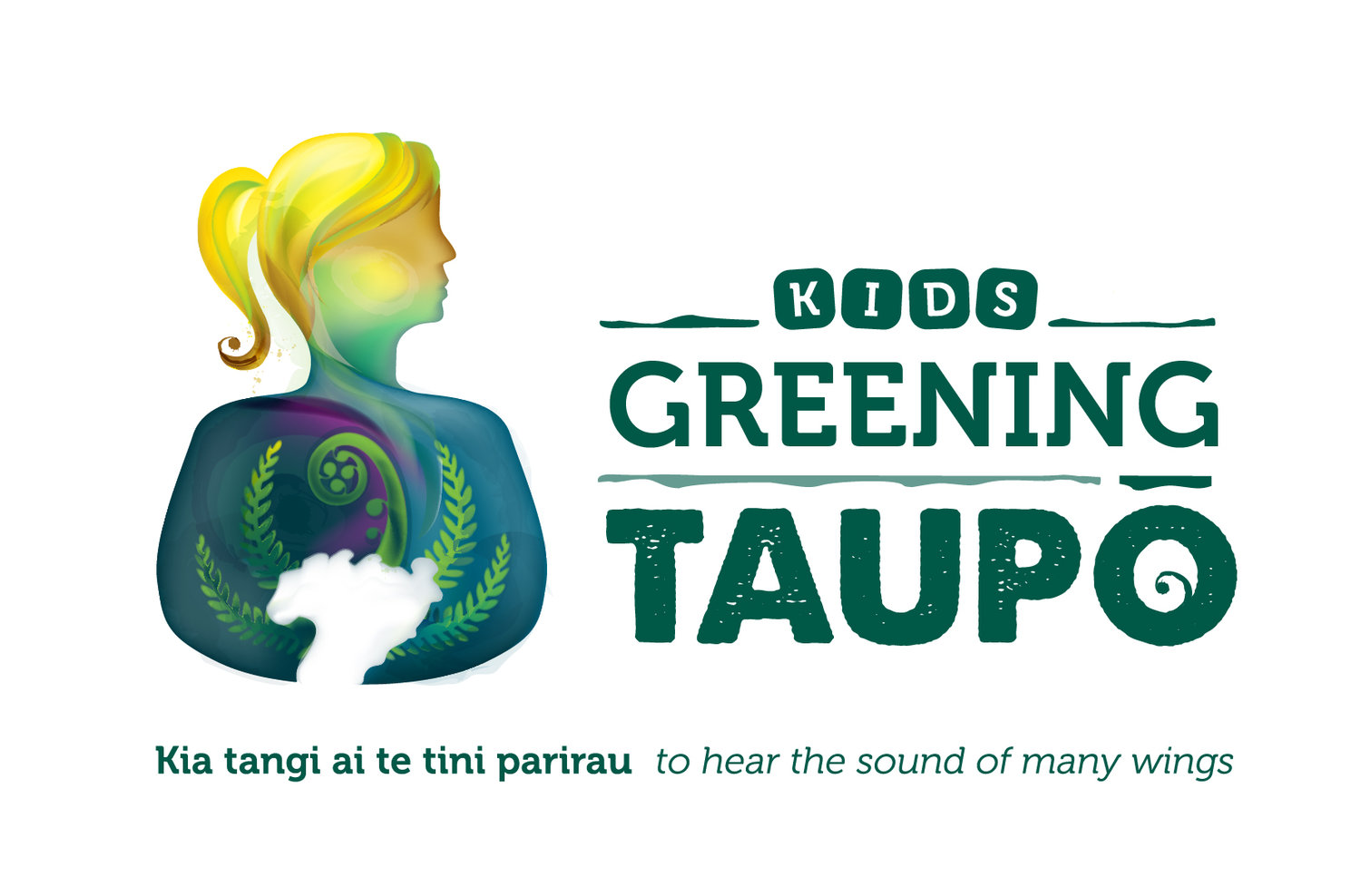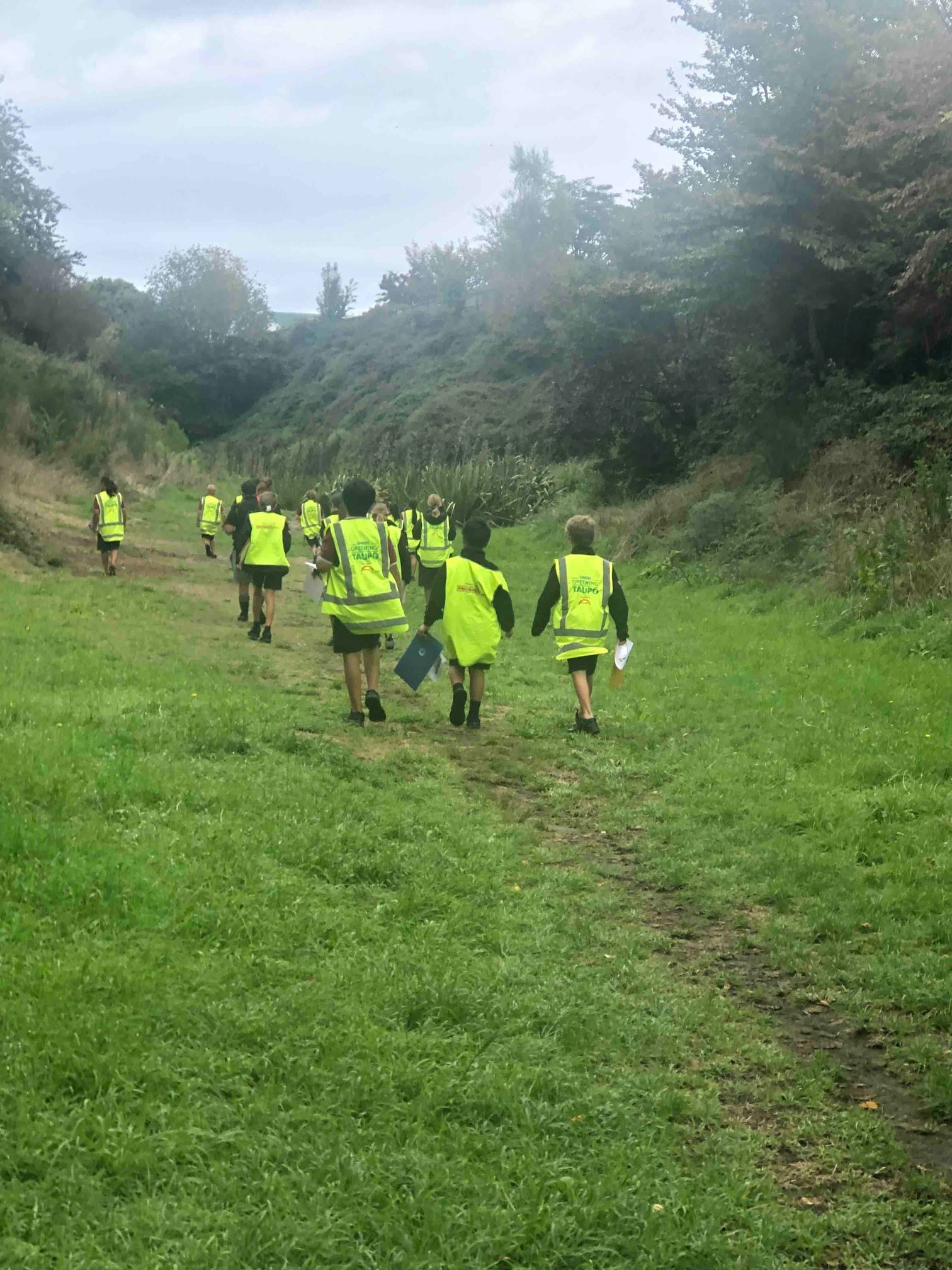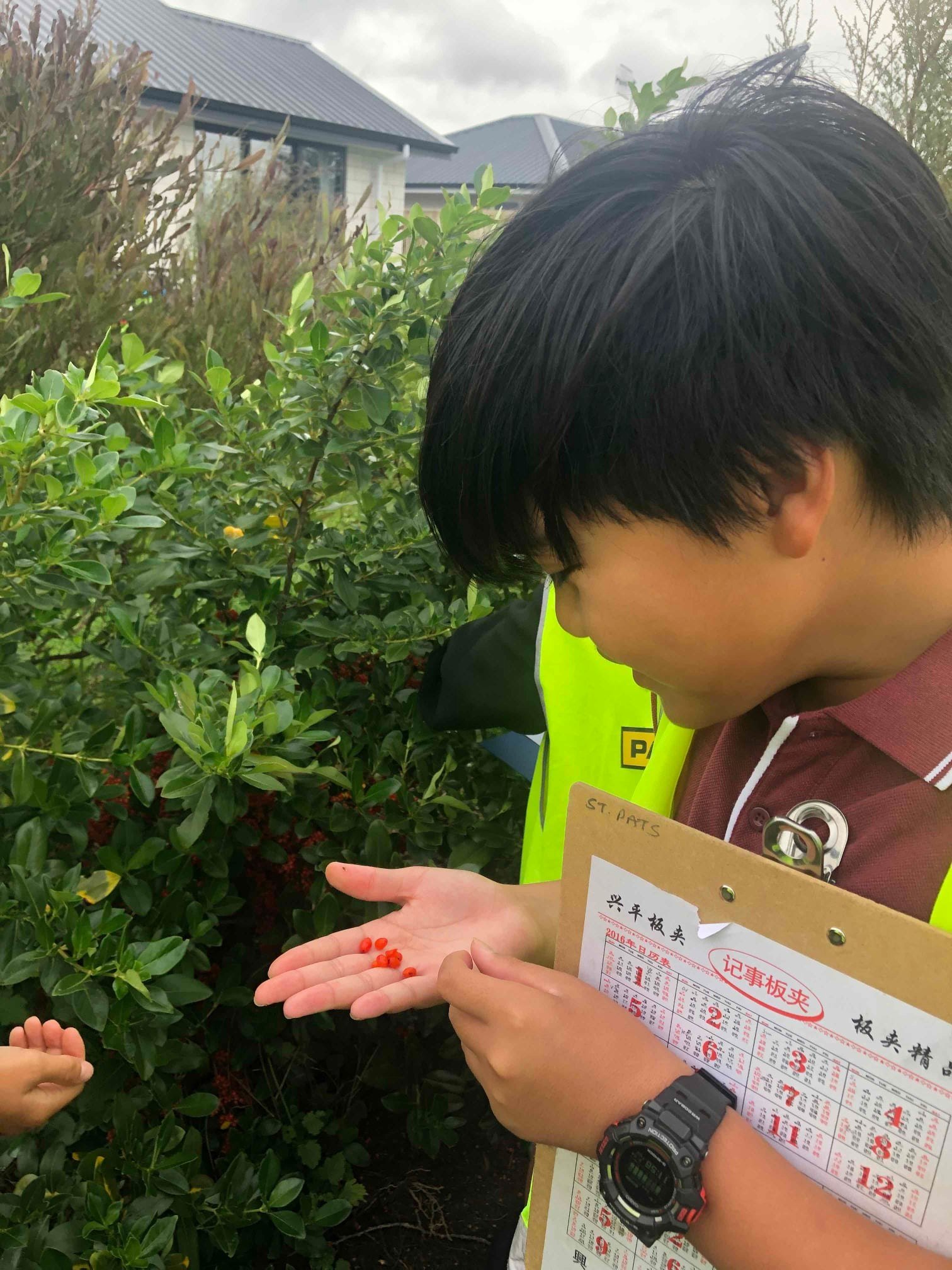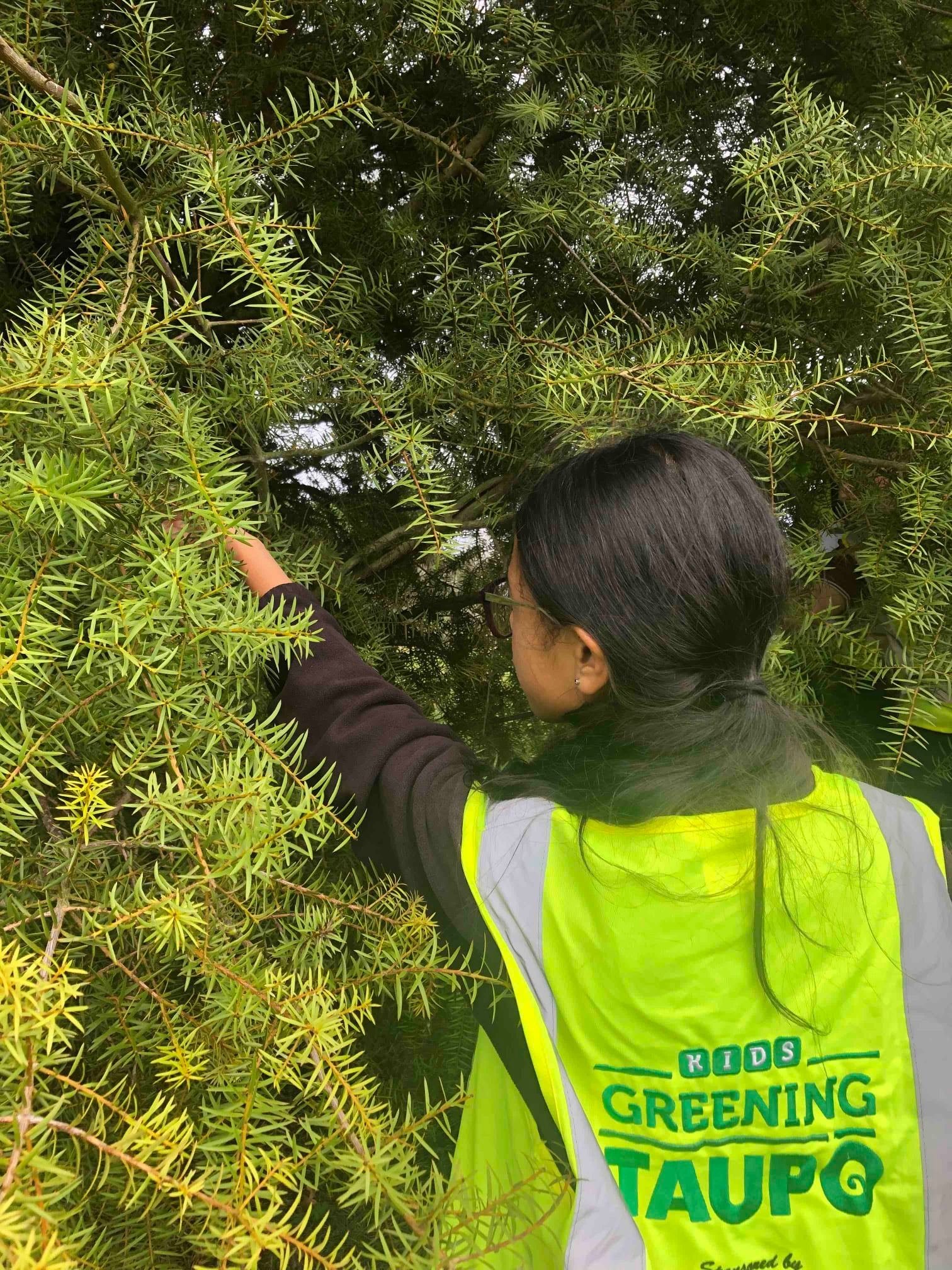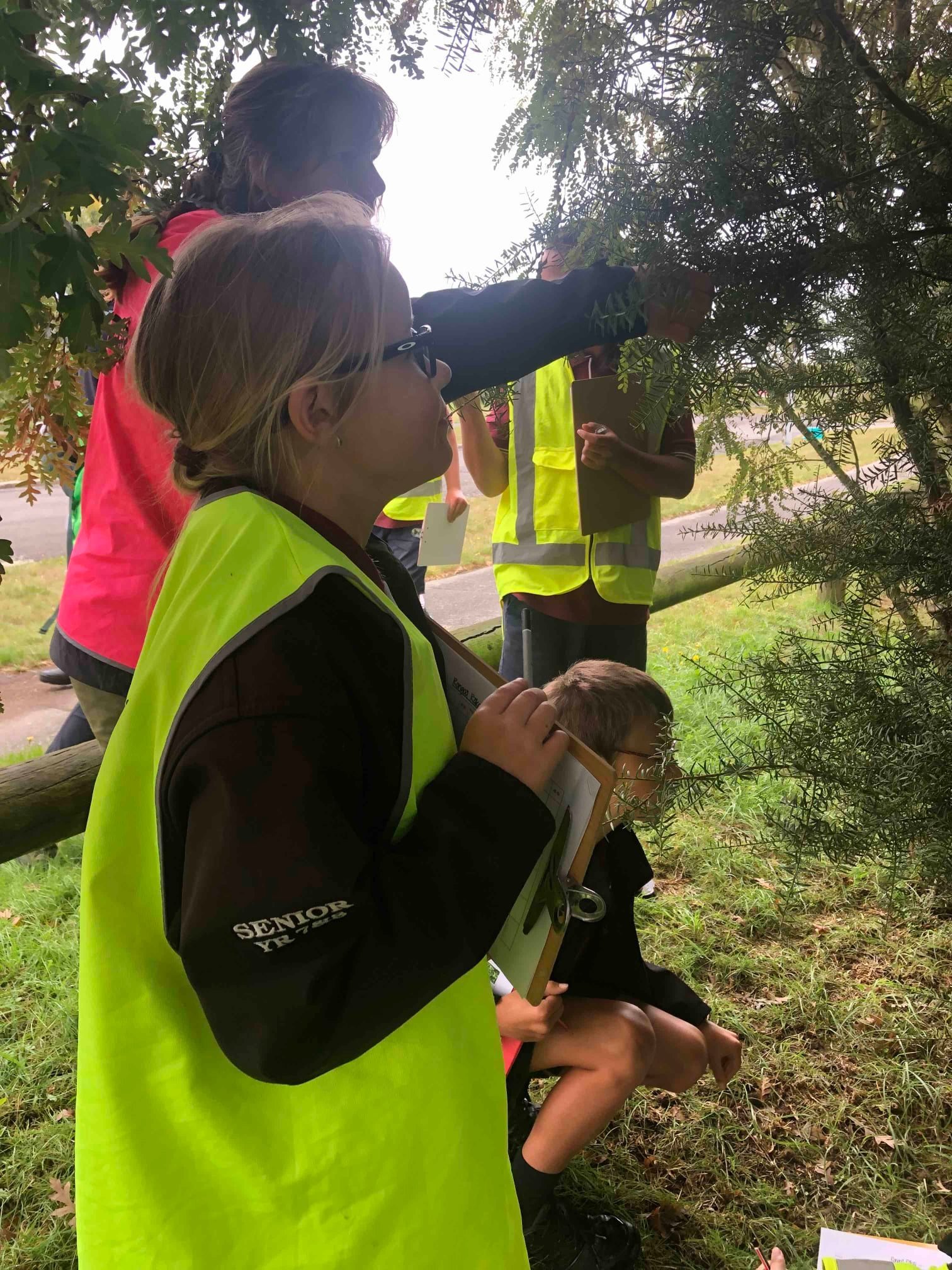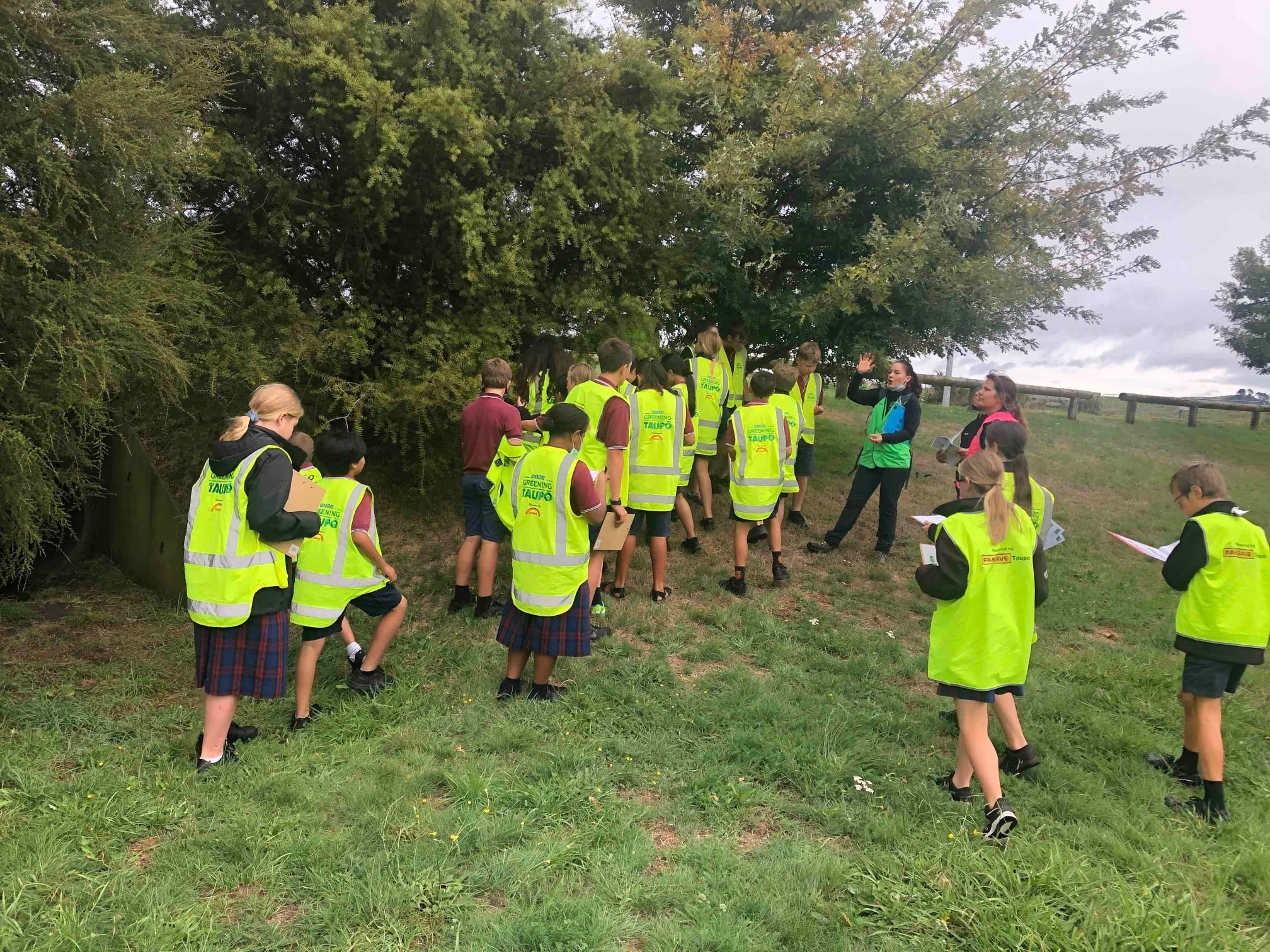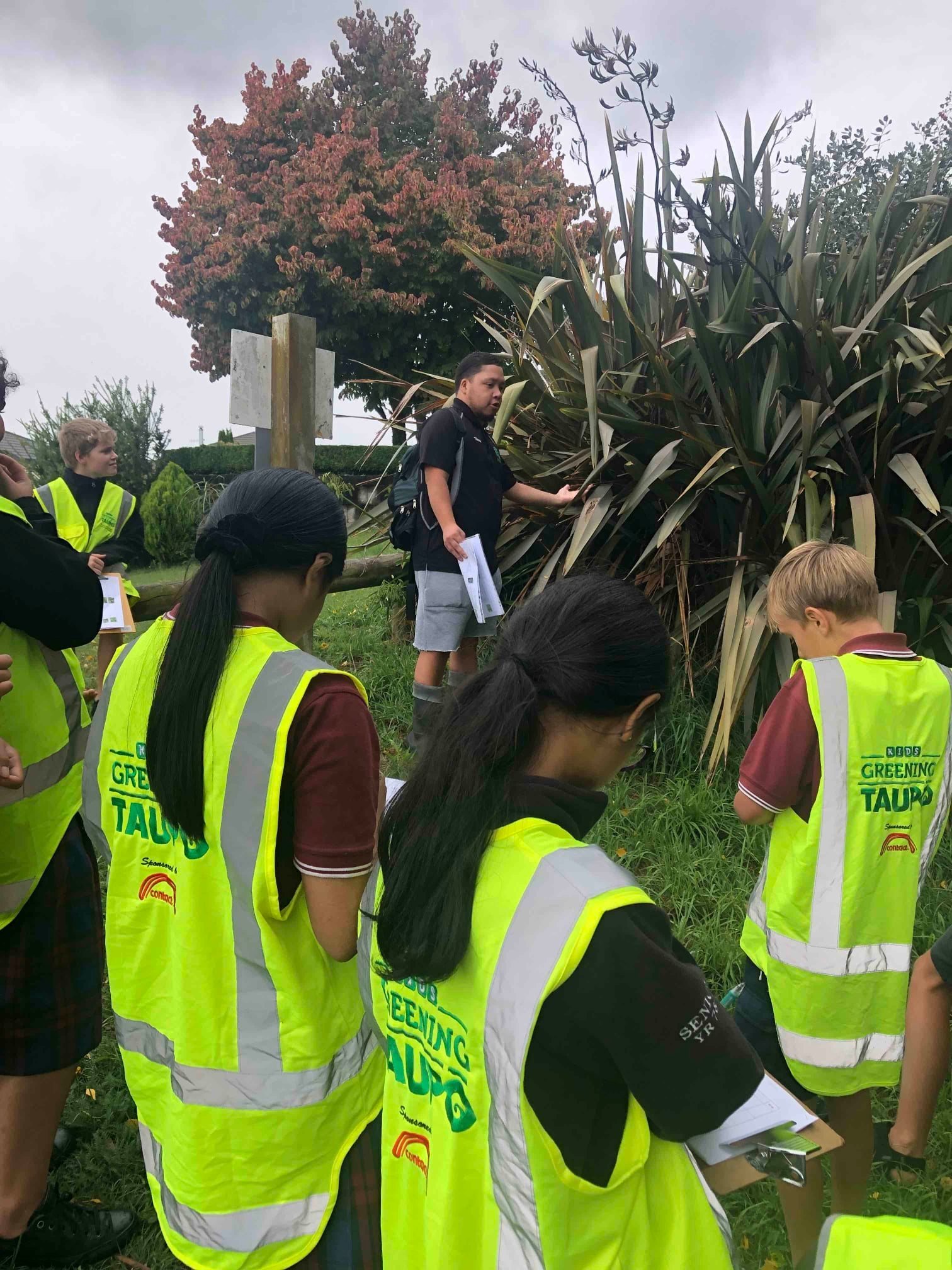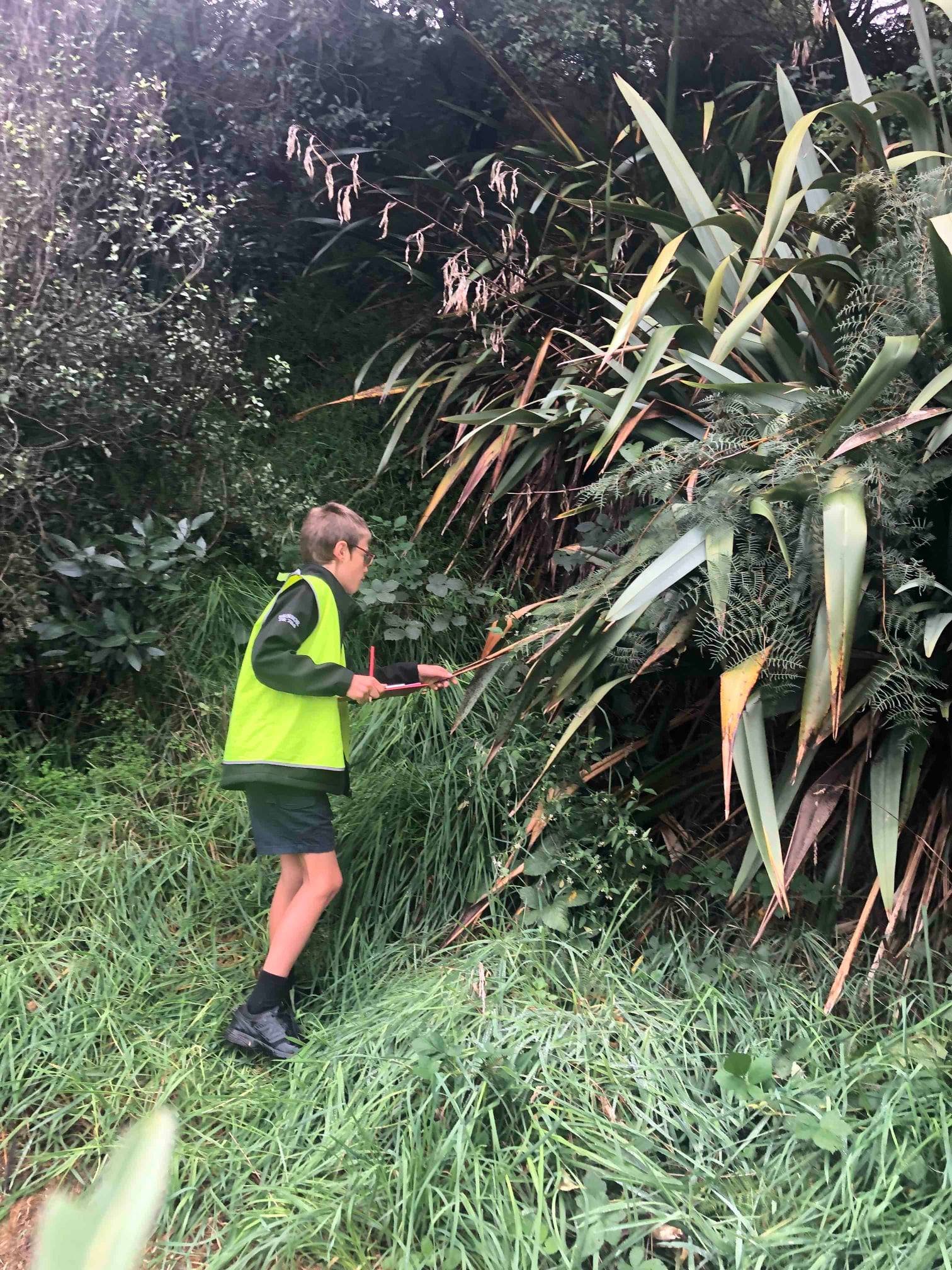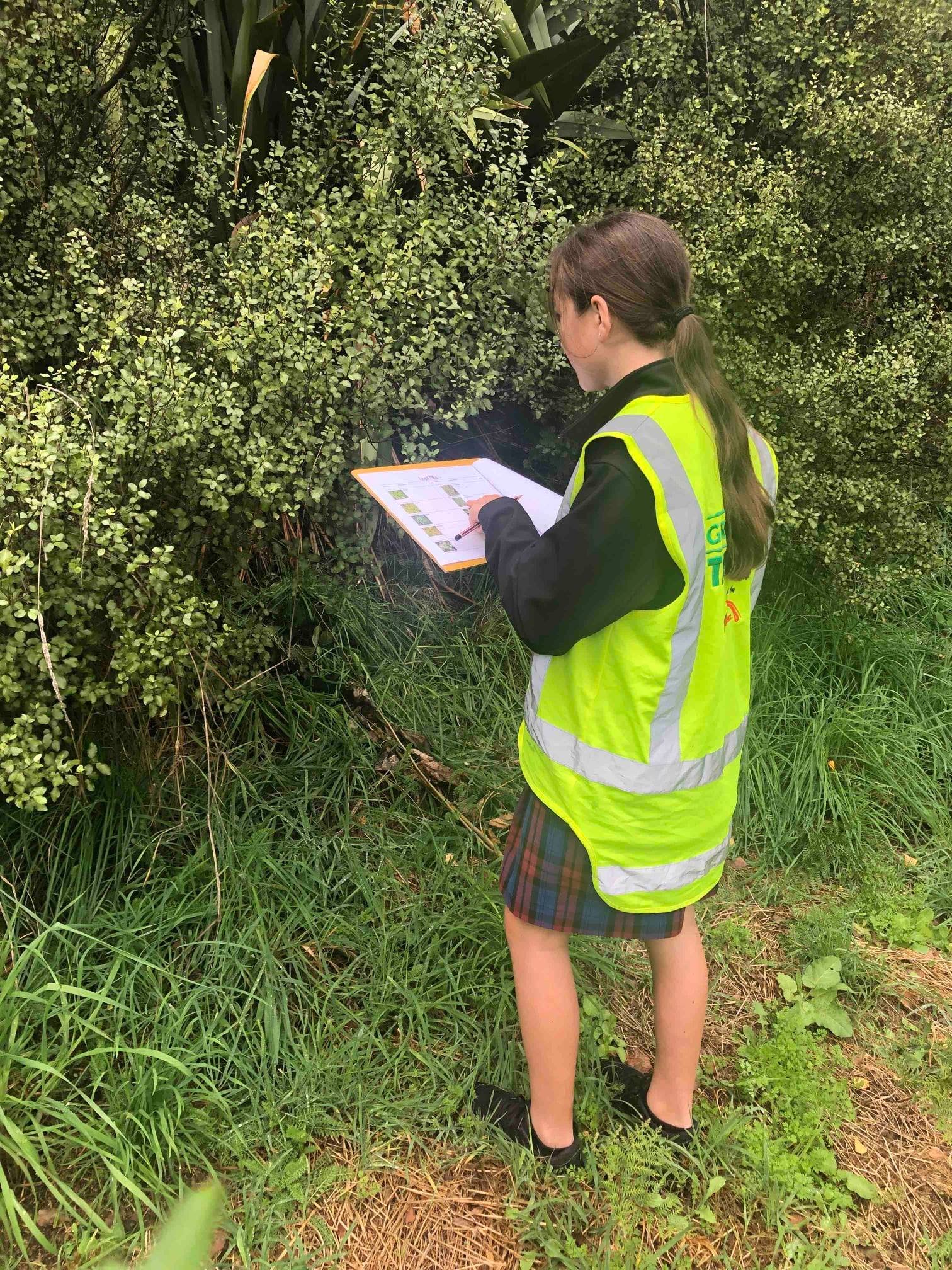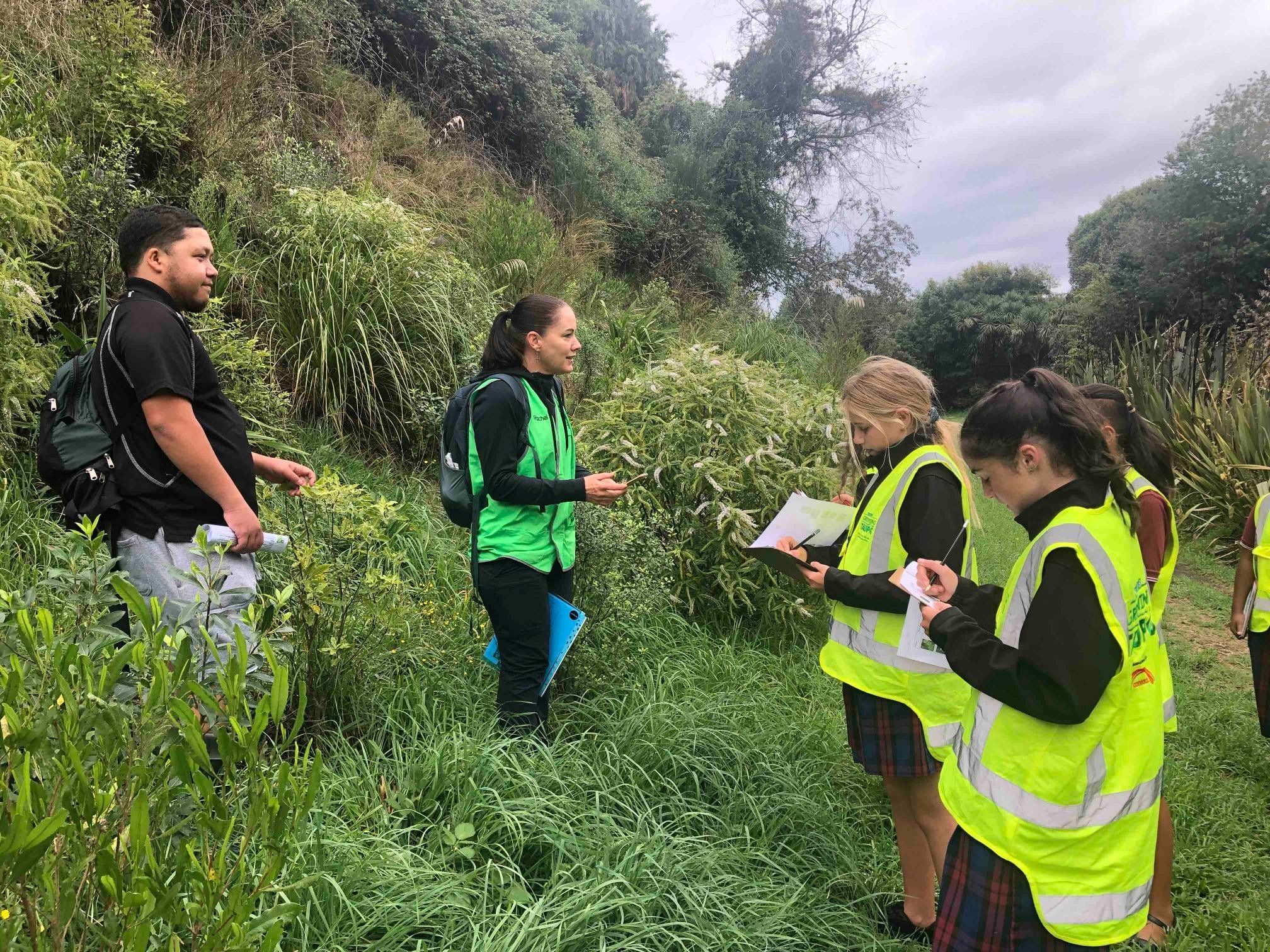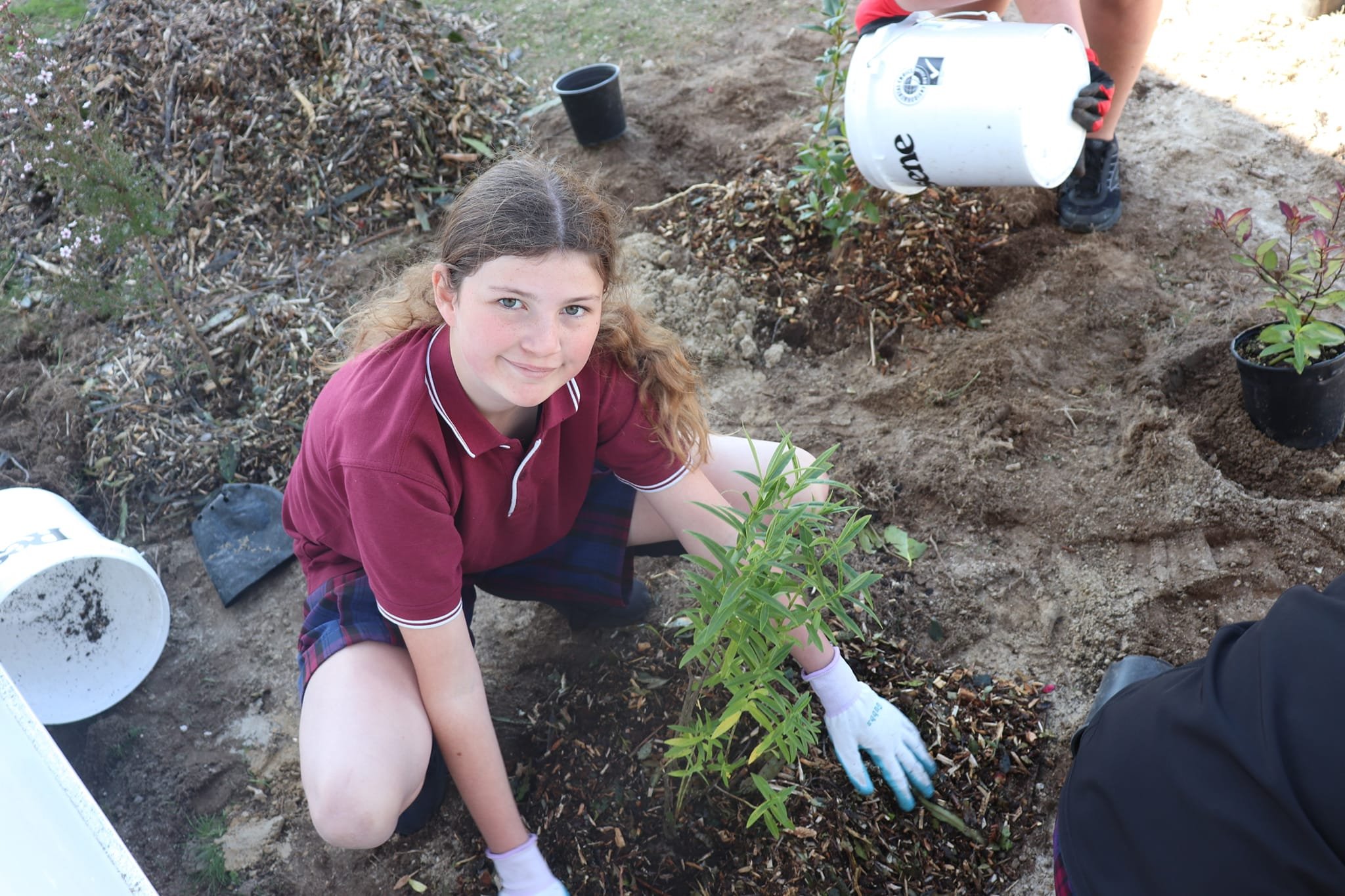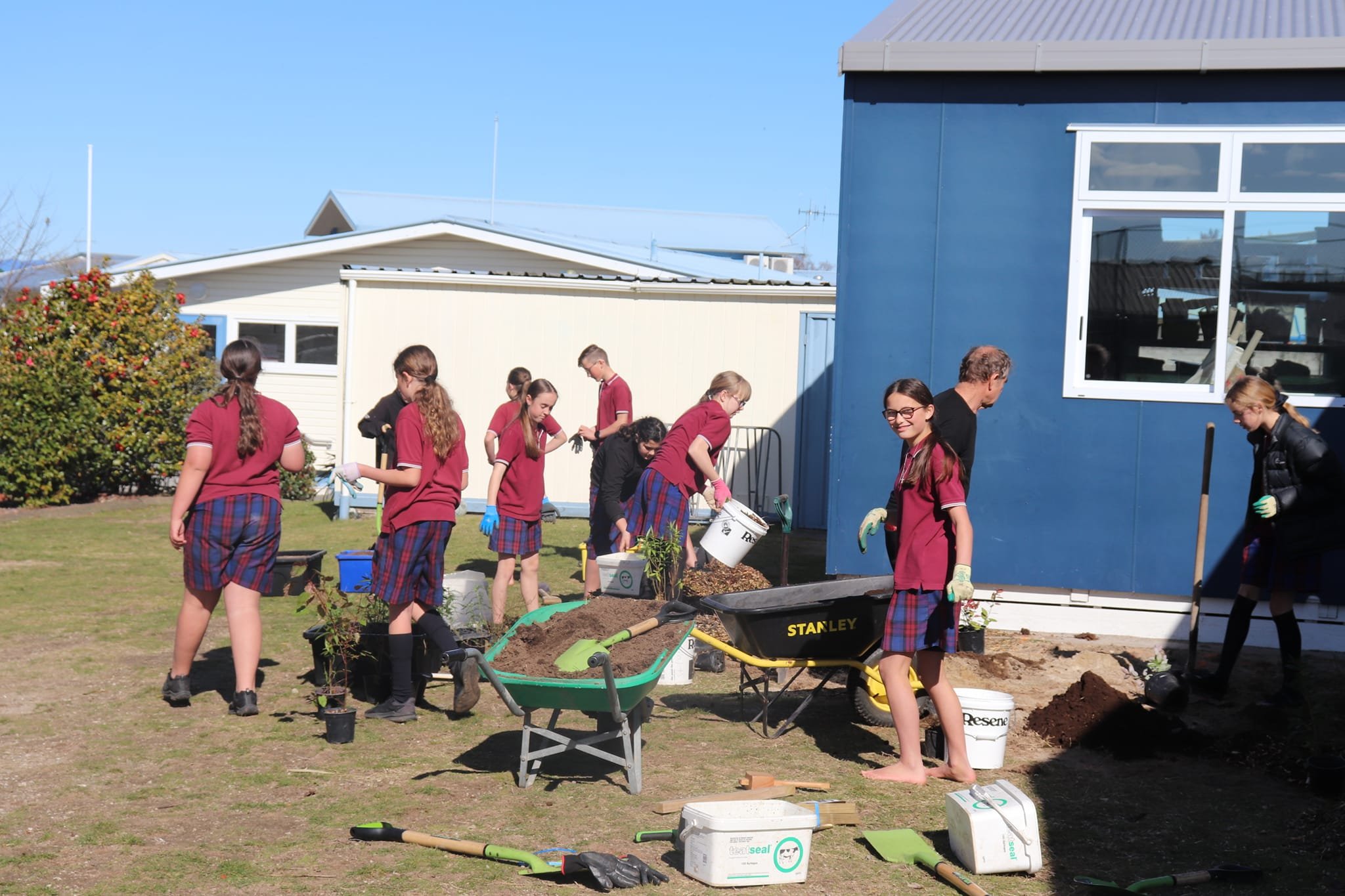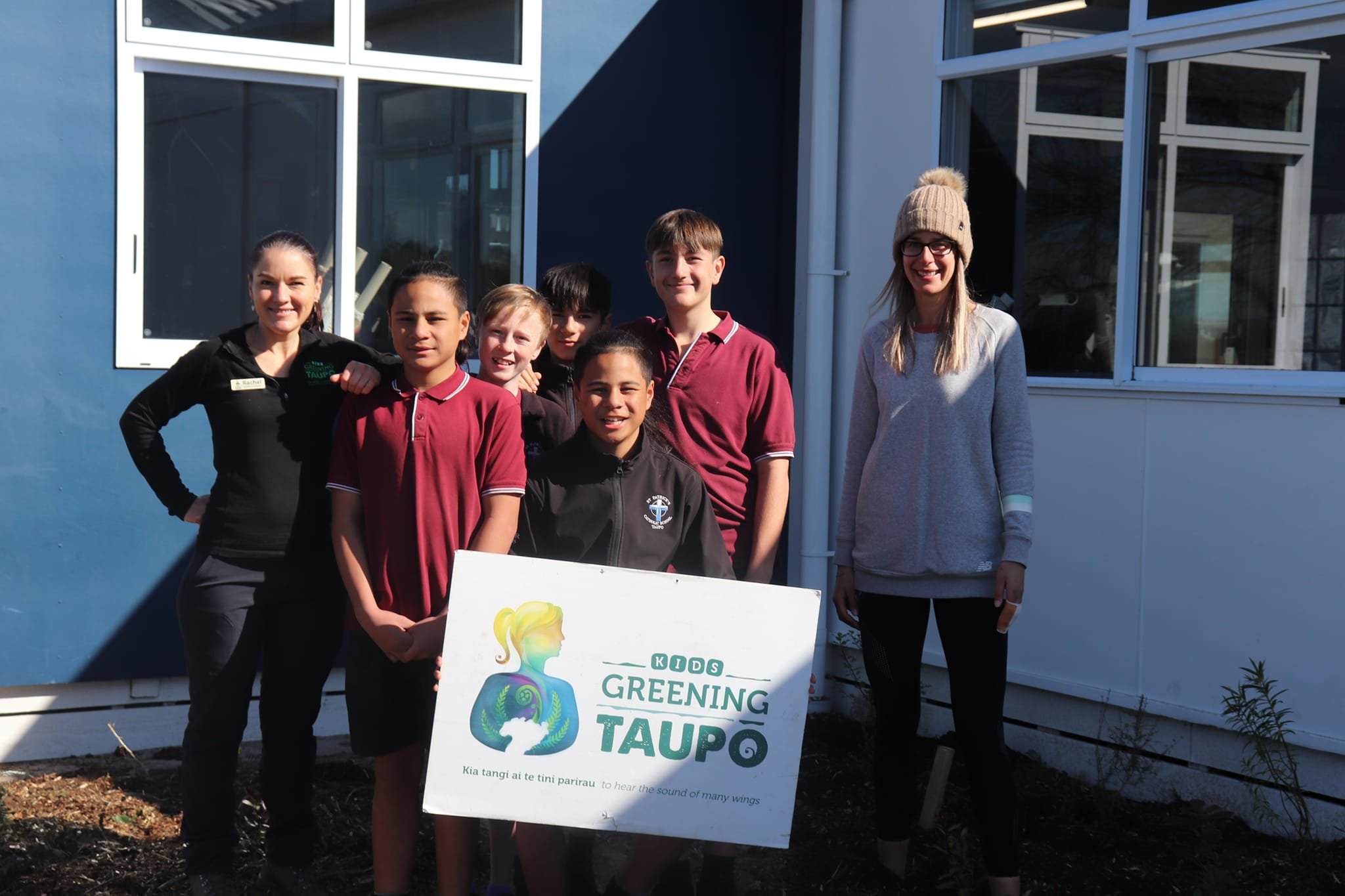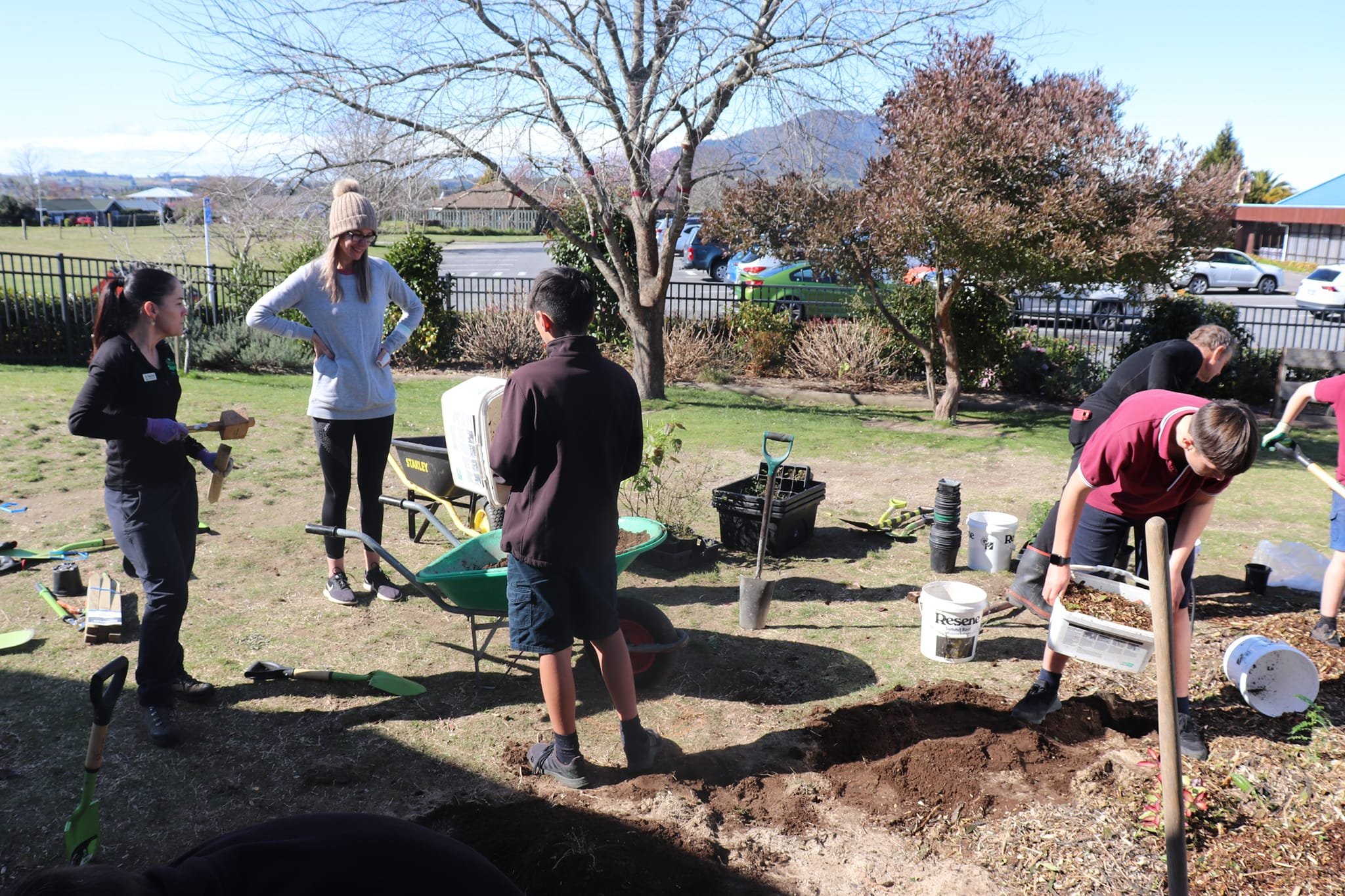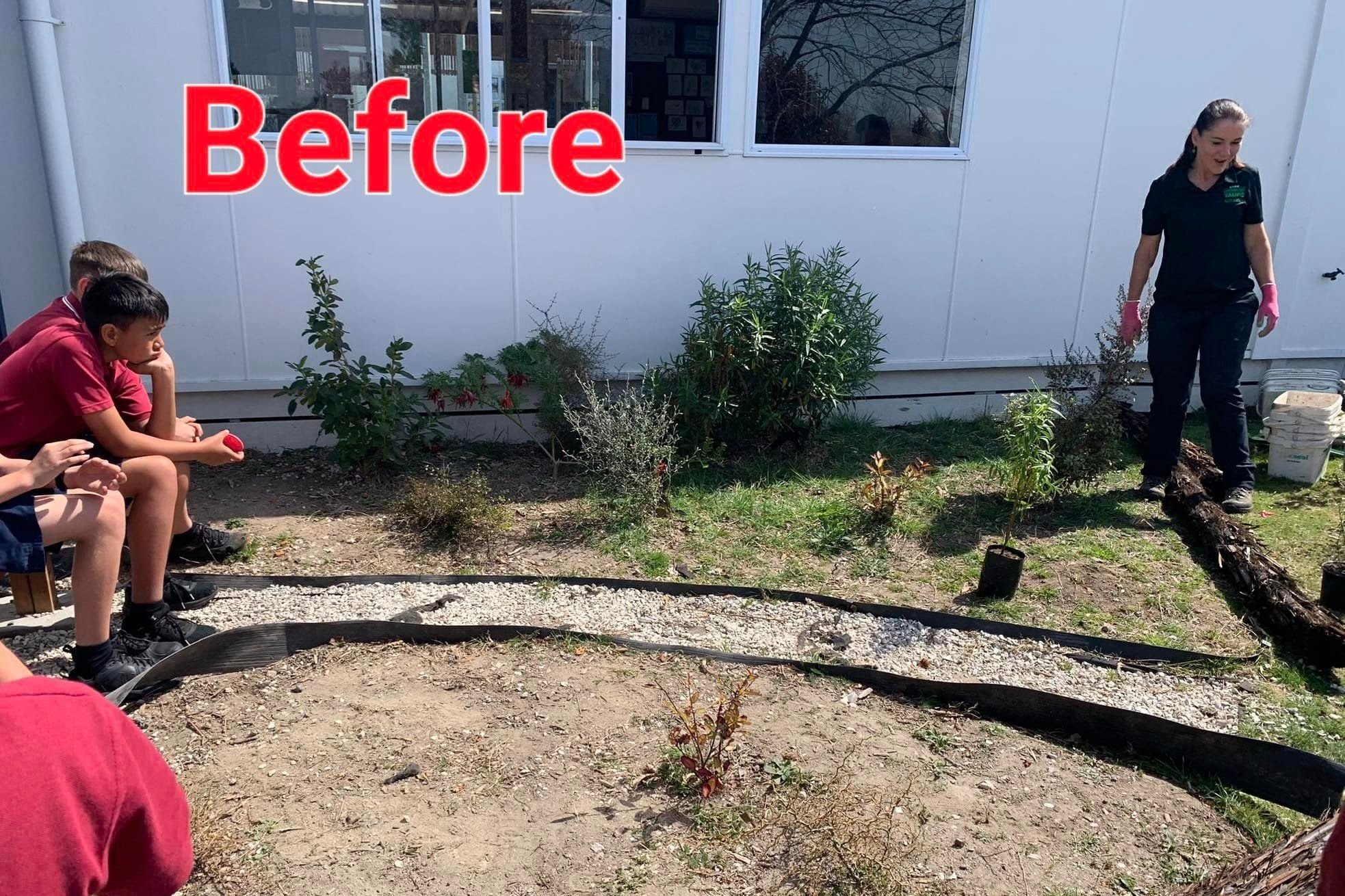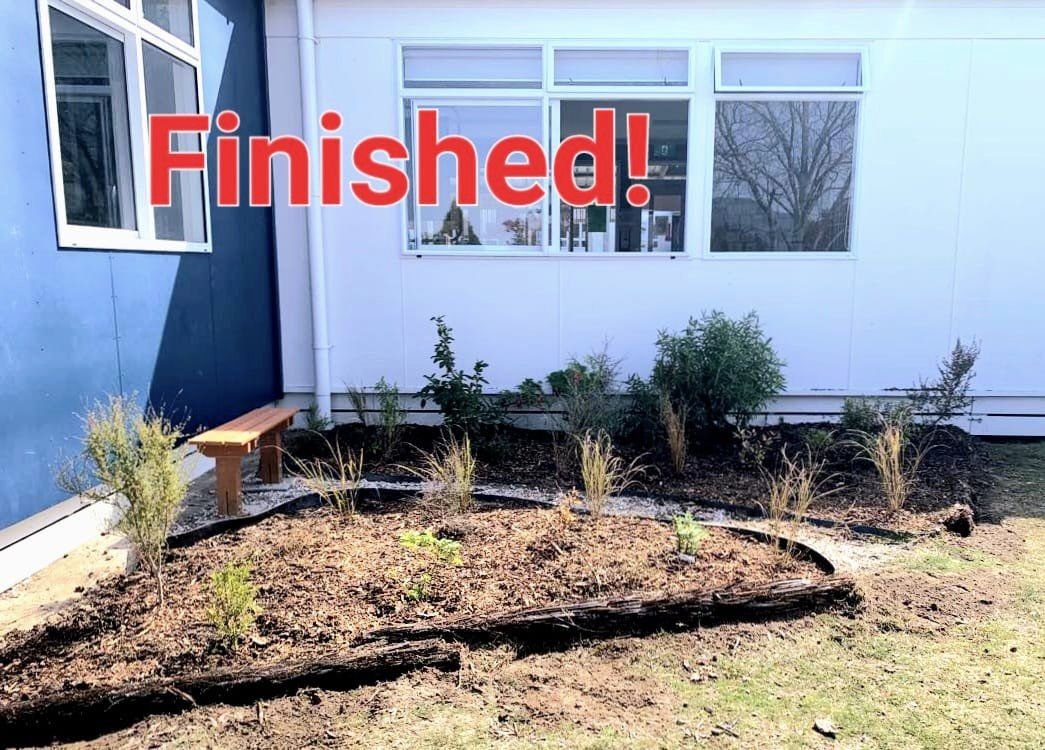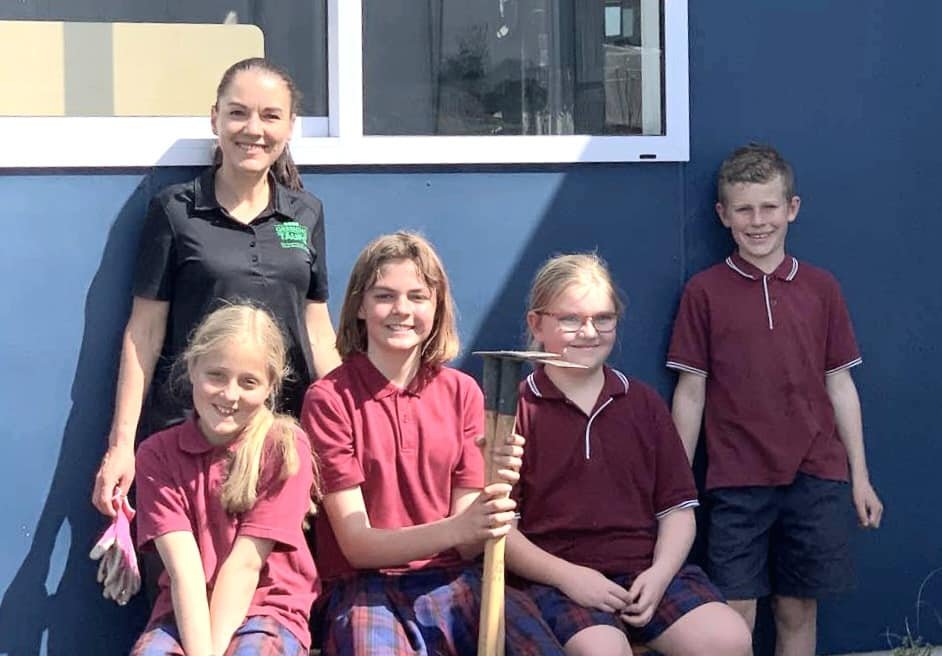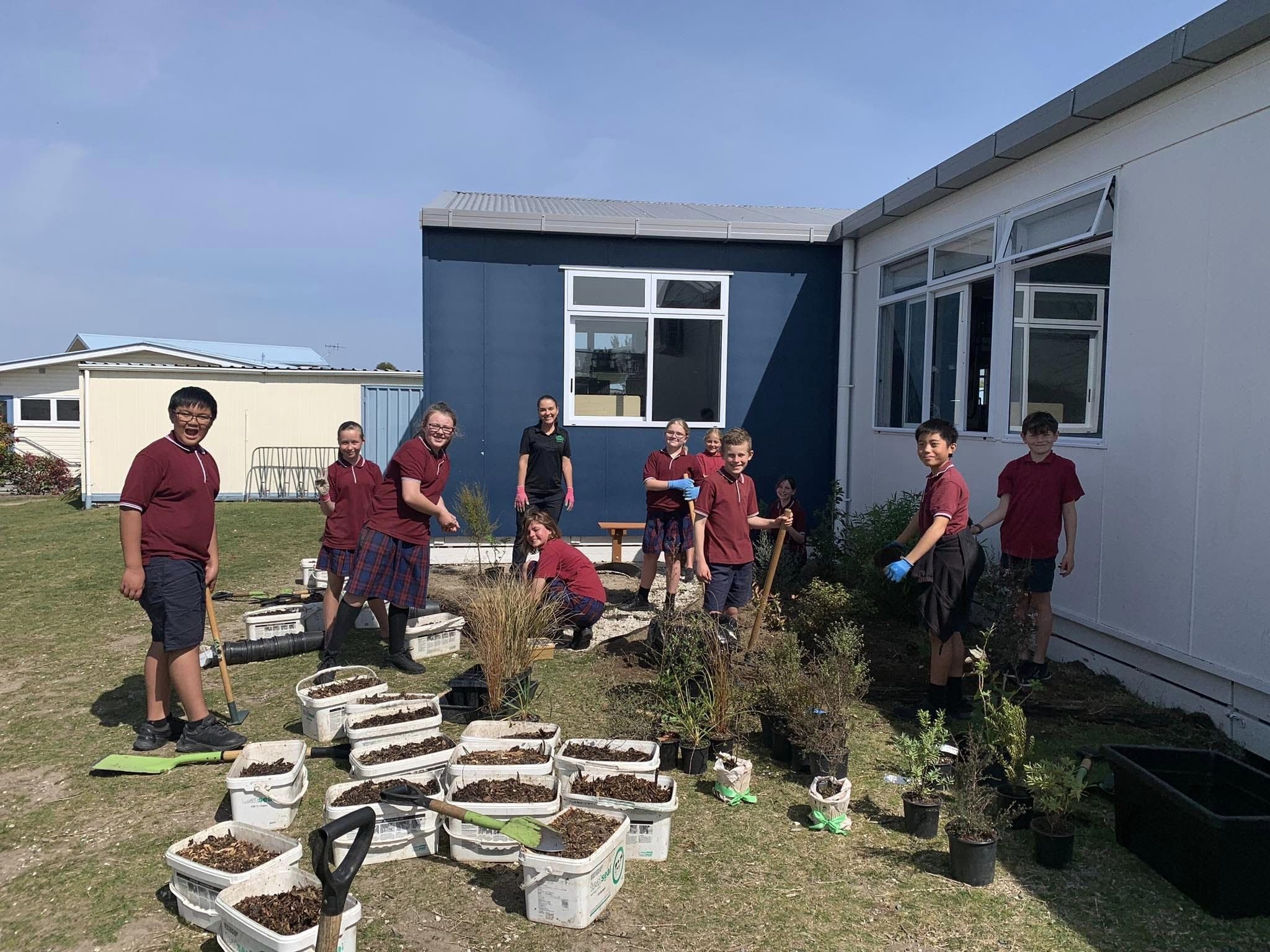St Patrick’s Catholic School’s Māra Hauora
The onset of winter and all the news of sickness enticed the students of St. Patricks School to investigate natural remedies that could be found in nature. In class, they started to research the different plants that the local Māori would use in rongoā Māori or the use of plants as medicine. To further their learning Kids Greening Taupō leaders took them to the Brentwood Gully to have real hands-on experience with the local rongoā plants growing around them.
Hands-on Research in the Brentwood Gully
The students learned about the rakau (trees), that would give sustenance to their bodies such as the karamū and tōtara berries. Though the berries of both these trees are small, they are packed with lots of antioxidants that help prevent or reduce sickness. An interesting conversation was sparked about how many berries should be taken. Students realised that manu (birds), also rely on them as kai (food), and there is a need for the seeds to be spread by manu to grow new trees also. As kaitiaki of tis space, it was their responsibility to take only what was needed.
Tākoha, our kairuruku reo Māori shared his knowledge and students were shown māhoe, that are said to hold the fire from Mahuika from when Maui went on a quest to find its origin. They also learned about some of the tikanga (customs) surrounding harakeke, and how it was one of the most important plants to early Māori . It provided ways for Māori to have food and shelter by being used for clothing and fishing nets. Parts of the plant were used as medicine to fight infections, amongst many other uses. Students were amazed at how many different plants had medicinal properties that ranged from koromiko curing stomach problems, to mānuka and kānuka helping to heal fevers and coughs.
Designing a Māra Hauora (Wellness Garden)at School
All the knowledge the students gained lead them to wanting to have their own rongoā garden at school. Rachel from Kids Greening Taupō and Jenni from Enviroschools helped the students think about their designs for the garden. There was lots of problem solving happening when they decided on which plants would be most useful and where they would grow the best. They met with the caretaker to make sure the site they chose would not be harmful to the existing buildings or underground pipes. Consultation with local kaumatua led to the decision to name this garden, Māra Hauora. The students applied to the KGT Contact Energy Take Action Fund and were awarded money and plants to support the project.
Garden Creation and Maintenance
Hard manual labour was undertaken to till the soil, dig holes, plant the chosen plants, and carry mulch to cover the ground between. In 2022 the garden was planted. The teacher leading the project, Miss Bourke, donated a seat and the students created a path of white stones leading to it. The idea was to create a space for refection and relaxation. Unfortunately, the soil was rock-hard pumice, half of the site was very exposed to the elements, and many students ran through the garden trampling plants. In the first year many plants did not survive. In 2023 the new Year7-8 class carried on with work on this site and gave it a refresh. It was great to see a ngutukākā and manuka flowering profusely. Ponga logs were added to mark the edges of the garden, weeds were pulled, then new plants were selected and planted with lots of vermicast and water. The whole site was covered with mulch. Future plans are for an archway at the start of the path and a sign to tell other students about the site. We look forward to continuing to support this project and see it grow.
